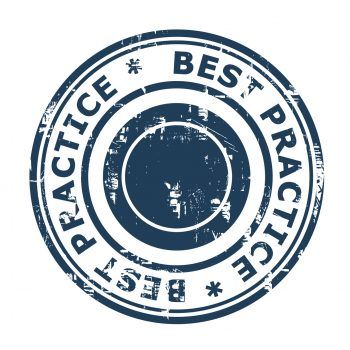
We’re often asked to give an example of a company that does best practice product management.
The easy answer is to say – look at Apple or look at Google.
But the reality is that these companies are successful for a whole raft of reasons. They’re probably good at product management, but their circumstances are very different from yours.’?
However, we do work with lots of other technology companies and what we see are pockets of excellence.
Let me give you an example…
One B2B company we work with believes that it’s best practice for their product managers to meet with at least one customer a month … face-to-face. They believe that their product managers get new insights and different perspectives about what customers actually want. And it really works. The product managers, their bosses and customers all agree.
But it’s not easy! Their customers are spread out all over the world so it means a heck of a lot of traveling. Sales want to be involved which risks turning the meeting from an information-gathering exercise into a negotiation. And the key contacts at their customers are incredibly busy so it’s almost impossible to persuade them to find the time to meet.
They’ve got plenty of other problems but on this, they’ve got things right!
This is best practice for this company. However, it would not be best practice for a company where meeting directly with individual customers really annoyed their channel partners. Or where there was an easier and cheaper alternative such as an industry conference or established user group. What’s best practice for one company is not necessarily best practice for the next.
So what does best practice really mean?
Best practice is the best approach to achieve your objectives given your current circumstances. It’s an approach that consistently shows better results than the alternatives.
The challenge is finding out what it is.
Understanding what works well in another company is a great starting point but it won’t automatically work for you. Your context and goals will be different.
Measuring the results of the approaches you’re using today, trying new things and evaluating their impact is another great approach. There is a great quote from Russell Ackoff. “Experience is not the best teacher, it is not even a good teacher. It is slow, too imprecise and too ambiguous. Organizations have to learn and adapt through experimentation.”
However, often it’s too time-consuming or just not possible to objectively measure these types of things. Just turning the spotlight on a particular activity and making a judgment on whether a change has produced improvements can be sufficient.
And if you think you’re already there, remember that your best practice from last year might not be right for this year. It’s easy to be complacent. The book ‘Best Practice’ by Richard Ilsley quotes the results of a survey of business managers. The vast majority (65%) all believed their organization to be in the top 25% for best practice!
Our view is that you need to decide on what’s best practice given your context and circumstances. To start doing that you need to be aware of the tools, approaches, and techniques that have been successful elsewhere. And then you need to select, try and roll-out the ones that work.
Through our work with leading technology companies, our Journal research, and industry surveys we have identified successful product management tools and techniques. If you want to find out about them why not attend one of our training courses.
Andrew Dickenson
Director, Product Focus


Join the conversation - 1 reply
A great article. We experience the same situation. instead of “best practise” we have started to work with “Great Inspiration”.
Where the definition of the situation is critical in analyzing the work done. One of our customers have forced us to go beyond best practise and world class concepts. They want to be better than that. And they deliver yearly profits of billions of dollars…